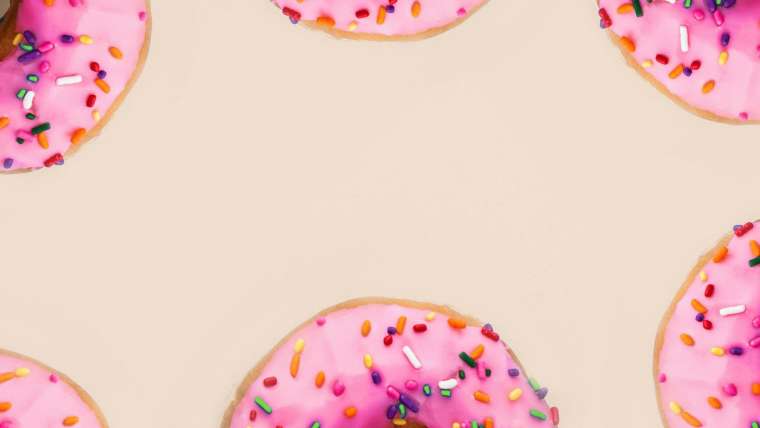Discover the secrets of the high-fat, low-carb keto diet in this comprehensive guide that will transform your health and wellness.
Table of Contents
- What is ketosis and the keto diet?
- Benefits of following a keto diet for beginners
- Low carb fruits to include in a keto diet
- Keto-friendly bread and snacks for beginners
- How to create a keto diet plan for beginners
- Sample keto menu plan for beginners
- Easy keto meal plan ideas for beginners
- Understanding the science behind keto max science and its benefits
- Tips for women over 50 following a keto diet
- Diverse diets: How to incorporate a keto diet into a diverse diet plan
Welcome to Keto 101! In this guide, we’ll explore everything you need to know about the high-fat, low-carb keto diet. Whether you’re a beginner looking to kickstart your weight loss journey or someone who wants to learn more about the science behind ketosis, this article is for you.
What is ketosis and the keto diet?
Let’s start with the basics. Ketosis is a metabolic process that occurs when your body doesn’t have enough carbohydrates to burn for energy. Instead, it turns to fat, breaking it down into ketones for fuel. The keto diet is a high-fat, moderate-protein, low-carb eating plan designed to put your body into a state of ketosis.
Benefits of following a keto diet for beginners
There are numerous benefits to following a keto diet, especially for beginners. Some of the most notable advantages include weight loss, increased energy levels, improved mental clarity, and better blood sugar control. By reducing your carb intake and increasing your healthy fat consumption, you can experience these benefits and more.
Low carb fruits to include in a keto diet
While fruits are generally high in carbs, there are still some options that can be included in a keto diet. Berries like strawberries, blackberries, and raspberries are lower in carbs and packed with antioxidants. Avocados are another excellent choice, containing healthy fats and fiber while being low in carbs.
Keto-friendly bread and snacks for beginners
Traditional bread and snacks are often high in carbs, making them unsuitable for a keto diet. Fortunately, there are plenty of keto-friendly alternatives available. Options like almond flour bread, coconut flour bread, and cloud bread can satisfy your bread cravings without kicking you out of ketosis. For snacks, consider nuts, seeds, cheese, and olives as tasty and convenient options.
How to create a keto diet plan for beginners
Creating a keto diet plan is essential for success as a beginner. Start by calculating your macronutrient ratios, focusing on high fat, moderate protein, and low carbs. Meal prepping can be a game-changer, ensuring you have keto-friendly options readily available. Tracking your food intake with a food diary or app can also help you stay on track.
Sample keto menu plan for beginners
Here’s a sample menu plan to give you an idea of what a week on a keto diet could look like:
| Category | Information |
|---|---|
| What is Keto? | The ketogenic diet, commonly known as keto, is a high-fat, low-carb diet that has been shown to help with weight loss, increase energy levels, and improve overall health. |
| Macronutrient breakdown | A typical keto diet consists of approximately 70-75% of calories from fat, 20-25% from protein, and only 5-10% from carbs. |
| Benefits | Some potential benefits of the keto diet include weight loss, improved mental clarity, reduced inflammation, and regulated blood sugar levels. |
| Food to eat | Healthy fats like avocados, olive oil, and nuts, high-quality proteins like eggs, fish, and meat, and low-carb vegetables like spinach, broccoli, and cauliflower. |
| Food to avoid | Avoid high-carb foods like bread, pasta, rice, sugary snacks, and processed foods. |
| Potential side effects | Some people may experience temporary side effects when first starting the keto diet, such as the keto flu, which can include headaches, fatigue, and irritability. |
| Consult a healthcare professional | Before starting any new diet, including the keto diet, it’s recommended to consult with a healthcare professional or a registered dietitian to ensure it’s the right choice for you. |
- Monday: Bacon and eggs for breakfast, avocado chicken salad for lunch, and zucchini noodles with meatballs for dinner.
- Tuesday: Keto smoothie for breakfast, Greek yogurt with berries for lunch, and salmon with roasted broccoli for dinner.
- Wednesday: Keto pancakes for breakfast, tuna salad lettuce wraps for lunch, and steak with asparagus for dinner.
Easy keto meal plan ideas for beginners
When you’re short on time or cooking skills, simple meal ideas can be a lifesaver. Consider options like omelets, salads with protein, steak with a side of veggies, or stir-fries with cauliflower rice. Pre-made options like deli meat roll-ups or canned tuna can also make for quick and easy keto meals on the go.
Understanding the science behind keto max science and its benefits
Keto max science refers to the science behind maximizing the benefits of a keto diet. By following the principles of keto max science, you can optimize your results on a keto diet. This includes focusing on nutrient-dense foods, staying hydrated, and getting enough electrolytes to support your body during ketosis.
Tips for women over 50 following a keto diet
Women over 50 may have specific considerations when following a keto diet. Hormonal changes, metabolism shifts, and potential nutrient deficiencies can all impact how women in this age group respond to a keto diet. It’s essential to consult with a healthcare provider before starting any new diet plan and make adjustments as needed.
Diverse diets: How to incorporate a keto diet into a diverse diet plan
If you follow a diverse diet or have cultural and dietary preferences, incorporating a keto diet can still be achievable. Look for keto-friendly recipes that align with your preferred cuisine, adapt traditional dishes to fit a keto framework, and explore the wide range of low-carb options available. Remember, there’s no one-size-fits-all approach to dieting, so customize your keto plan to suit your needs and tastes.
With this comprehensive guide to the keto diet, you’re equipped with the knowledge and tools to start your keto journey with confidence. Whether you’re looking to shed pounds, boost your energy, or improve your overall health, the keto diet can be a transformative option for beginners and experienced dieters alike. Embrace the high-fat, low-carb lifestyle and see the incredible benefits it can offer!
FAQ
Is the keto diet safe for beginners?
Yes, the keto diet can be safe for beginners when done correctly. It’s essential to consult with a healthcare provider before starting and ensure you’re meeting your nutrient needs.
Will I feel hungry on the keto diet?
Initially, you may experience hunger as your body adjusts to burning fat for fuel. Eating enough healthy fats and protein can help curb hunger on the keto diet.
Can I eat out while following a keto diet?
Yes, you can still enjoy eating out on a keto diet. Look for protein and veggie-based options, ask for modifications to fit your dietary needs, and prioritize whole, unprocessed foods.
How long does it take to see results on a keto diet?
Results can vary, but many people begin to see changes in weight, energy levels, and mental clarity within a few weeks of starting a keto diet. Consistency and patience are key to achieving your goals.





